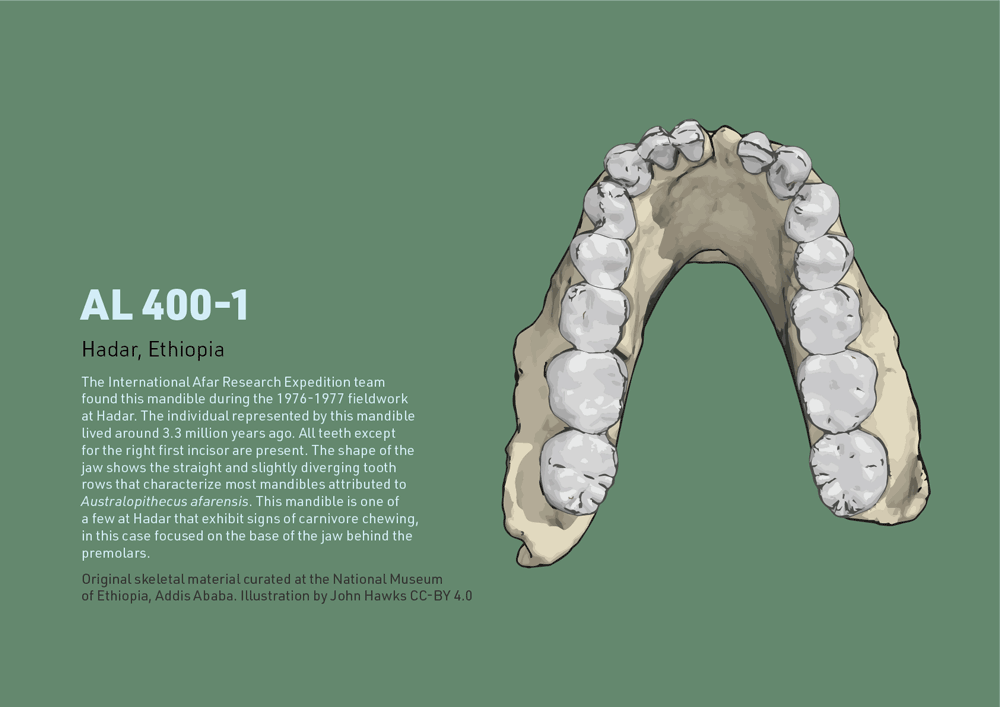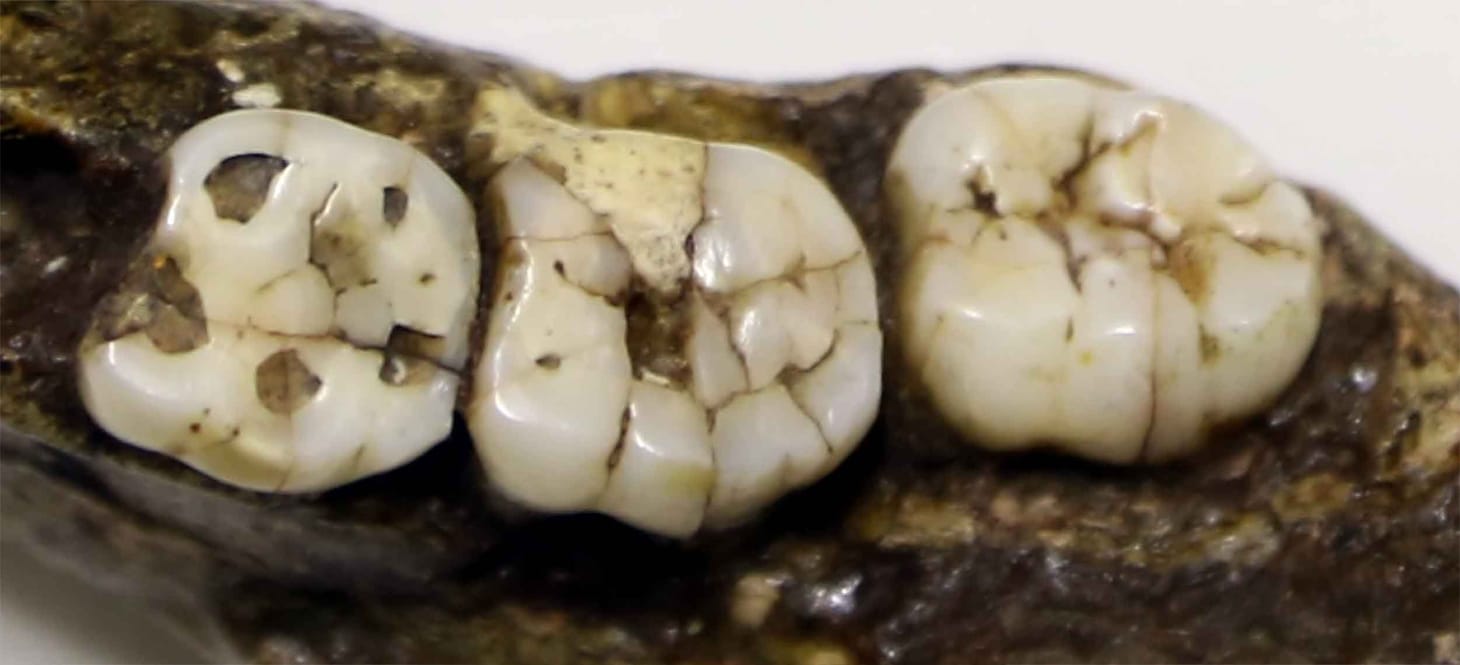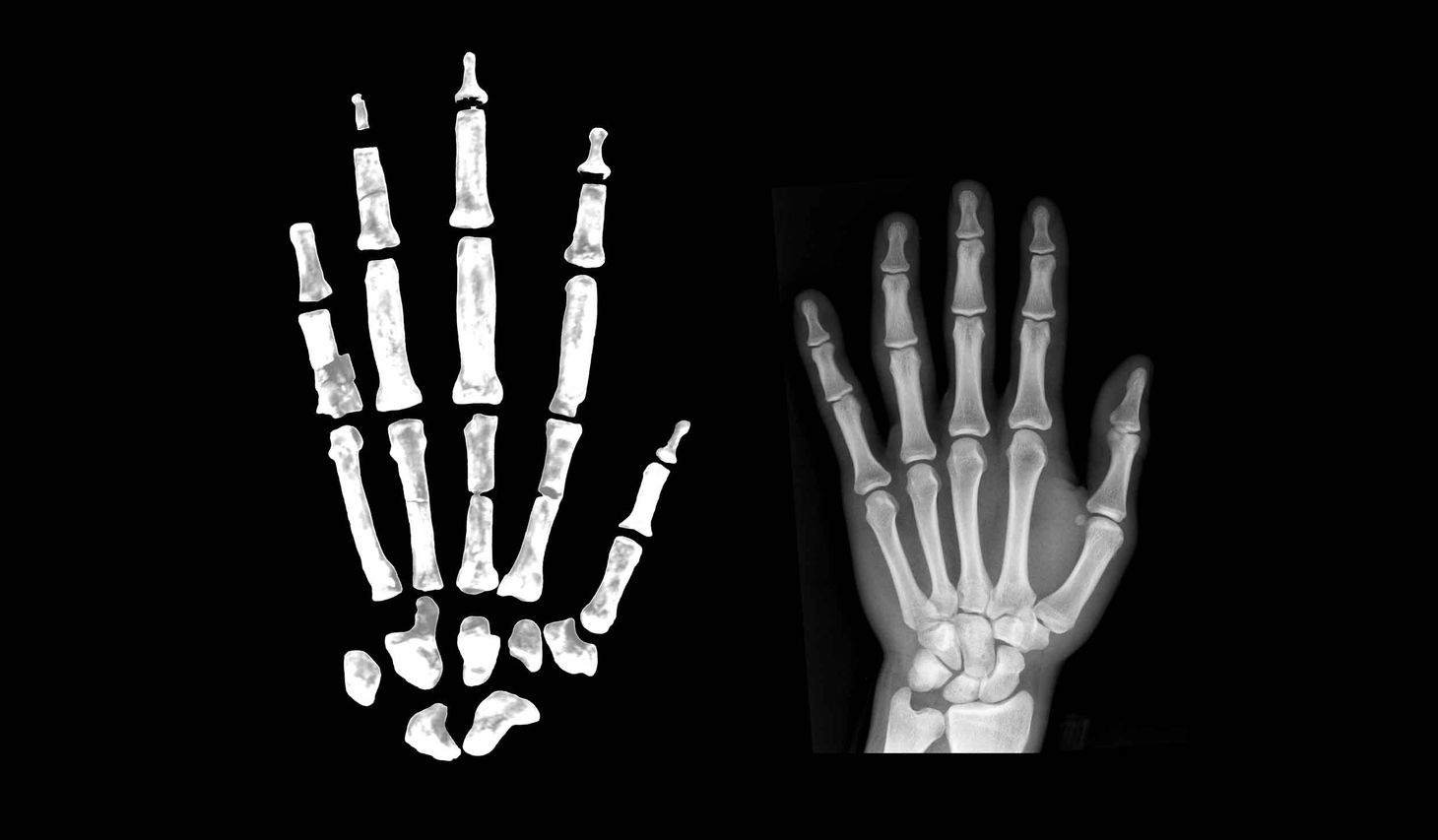Fossil profile: AL 400-1 mandible and the curving line of human evolution
Australopithecus afarensis was an early member of the hominin lineage, but it was not intermediate between humans and living great apes in all ways.

The jaws of ancient human relatives that we call “Australopithecus” show the problems of thinking about evolution as a straight line of gradual change.
If we knew nothing about the fossil record of human relatives, we might imagine that the jaws and teeth of human ancestors and relatives would simply be “in between” today’s people and close living relatives like bonobos and chimpanzees. Chimpanzee and bonobo molar teeth are roughly similar in size to ours, and with a bit thinner enamel. Their canine teeth and incisors are much larger than ours. Their left and right rows and premolars and molars are roughly parallel, giving their jaw the shape of a “U”. Ours diverge toward the back, like a parabola.
Early human relatives like Australopithecus afarensis are intermediate between the chimpanzee-bonobo jaw shape and human jaw shape in some ways. Their tooth rows diverge slightly toward the back, maybe a bit closer to chimpanzees but in a humanlike direction. Their canine teeth are quite a lot smaller than chimpanzee and bonobo canines, though still a bit large compared to humans.
But their molars are almost twice the size of either ours or chimpanzees. They’ve gone off in their own evolutionary direction. Along with that large size comes a complexity in form, especially in the second and third molars. The bone of their jaws is much thicker and deeper than either humans or chimpanzees, too.
We don’t know whether Au. afarensis was a direct ancestor of ours, or whether it evolved on its own branch for some time after our shared common ancestors. All the known species of hominins from its time and the next million years have much bigger molar and premolar teeth than today’s people, so it seems very likely that our own branch must have reversed a legacy of thick-enameled, large molar teeth that all hominins shared. It is one of many ways that our evolutionary history was far from a straight line.
John Hawks Newsletter
Join the newsletter to receive the latest updates in your inbox.



